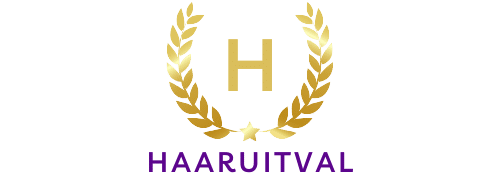The progression of technology has forever altered the way we live, communicate and do business. Equally, it continues to redefine and enhance the boundaries of medical practice, particularly in surgical procedures. A prime example of this is the use of 5G technology in facilitating remote surgery and telementoring.
Exploring 5G in Remote Surgery
Remote surgery, also known as telesurgery, is an innovative surgical concept where a surgeon performs operations on a patient via a robotic interface, often over considerable distances. It’s a transformative tool that’s progressed in parallel with advancements in technology, the internet, and data transmission systems.
Also to discover : Can AI-Powered Personal Health Companions Encourage Better Lifestyle Choices?
5G, the latest generation of mobile internet connectivity, promises faster speeds and more reliable connections. It significantly surpasses its predecessors, particularly in speed, reduced latency, and the ability to connect more devices simultaneously. These characteristics are critical in the context of remote surgery, where real-time and uninterrupted data transmission is a matter of life and death.
The improvements 5G delivers in speed and reliability can facilitate a seamless and efficient surgical procedure. A surgeon in one location can control a robotic system on the other side of the globe, with the assurance of an instantaneous response and real-time feedback. This capability is not only transformative but also life-saving, especially in areas where surgical expertise is scarce or non-existent.
Also read : What’s New in Smart Glasses for Augmented Reality in Logistics and Warehousing?
Moreover, high quality and real-time imaging are fundamental to the success of any surgical procedure. 5G technology can manage the transmission of high-definition images with minimal latency from the patient’s side to the surgeon’s console. This superior imaging capacity provides surgeons with more precise and detailed visual information, enabling them to perform complex procedures with more accuracy.
The Impact of 5G on Telementoring
Apart from remote surgery, 5G has a significant role in telementoring. Telementoring involves a less experienced surgeon performing a procedure under the guidance of an experienced surgeon located remotely. The possibility of real-time communication between the two parties is crucial for the success of the procedure.
5G’s superior speed and reduced latency offer an ideal solution to this requirement. It enables real-time communication between the mentor and the mentee. The mentor can easily guide the mentee through complex procedures, observe in real-time, and provide feedback instantly, leading to a safer and more efficient operation.
Furthermore, the vast network capacity of 5G allows for multiple connections at the same time. This can facilitate multiple mentoring sessions simultaneously, offering a wide range of learning opportunities for budding surgeons. This way, it can significantly contribute to bridging the skills gap in surgery.
Google Scholar and Crossref: The Backbone of Remote Surgery Research
As the healthcare industry continues to embrace the digital revolution, platforms such as Google Scholar and Crossref have become invaluable in advancing the research and understanding of remote surgery and telementoring. They offer a vast network of scholarly articles, research papers, and clinical trials that provide in-depth insights into the subject.
Google Scholar, for instance, is an extensive database of scholarly literature across various disciplines and sources. It contains a wealth of information about remote surgery, its benefits, challenges, and the role of 5G technology in its development. The platform provides medical practitioners and researchers with access to a diverse array of resources, from case studies to comparative analysis, that can be instrumental in furthering their knowledge and research.
Crossref, on the other hand, serves as a link to scholarly works published across multiple platforms. It provides metadata about a wide range of content types, including books, conference proceedings, and journals. This data can be vital in understanding the nuances of remote surgery and the implications of 5G technology in its implementation.
The Future of Remote Surgery and Telementoring with 5G
The advent of 5G technology is undoubtedly a game-changer for remote surgery and telementoring. Its super-fast speed, reduced latency, and large capacity bring the vision of real-time remote surgery closer to reality.
Nevertheless, like any other technology, 5G is not without its challenges. Concerns around data security, patient privacy, and the high cost of setup and maintenance are serious issues that need to be addressed for it to make a mainstream impact. There are also regulatory hurdles and ethical considerations to take into account.
Regardless, the potential benefits of 5G technology in the medical field, particularly in remote surgery and telementoring, are immense. It could democratize access to healthcare, make specialist care more widely available, and transform medical education. With continued research, collaboration, and investment, 5G technology could pave the way for a new era of medical practice.
Utilizing Google Scholar and Crossref for Advancements in Robotic Surgery
As researchers and medical practitioners delve deeper into the realm of remote surgical procedures and telementoring, the role of platforms like Google Scholar and Crossref becomes increasingly significant. These platforms provide access to a massive array of scholarly articles, research papers, clinical trials, and more, offering critical insights into the evolving world of remote surgery and its associated technologies.
Google Scholar is a comprehensive database of scholarly literature spanning across various disciplines. It’s an invaluable resource for individuals looking to understand the benefits, challenges, and role of 5G technology in the development of remote surgery. From case studies to comparative analysis, Google Scholar allows medical practitioners and researchers to further their knowledge, while also contributing to the collective understanding of the subject.
On a similar note, Crossref plays a crucial role in the research process by providing metadata about a myriad of content types, including books, conference proceedings, and journals. By linking scholarly works published across numerous platforms, Crossref forms a cohesive and interconnected database. This comprehensive information can be instrumental in understanding the intricacies of remote surgery and the implications of 5G technology in its implementation.
This combination of Pubmed Google, Crossref Pubmed, and Google Scholar Crossref allows for extensive research and deeper understanding. The high-speed access to a variety of free articles, the ability to verify authenticity through Crossref, and the user-friendly interface of Google Scholar together create a robust system for advancing research in remote surgery.
Conclusion: Charting the Path Forward with 5G and Remote Surgery
The introduction of 5G technology is set to revolutionize the field of robotic surgery and telementoring. Its characteristics of high-speed data transfer, low latency, and high-capacity connectivity could potentially alter the landscape of surgical procedures by making them more efficient, accessible, and safe.
However, the road to realizing this potential is fraught with challenges, including data security issues, patient privacy concerns, and high setup and maintenance costs. Additionally, regulatory hurdles and ethical considerations must be navigated carefully to ensure that the benefits of the technology are not overshadowed by potential risks.
Despite these challenges, the potential for 5G technology to democratize access to healthcare, broaden the availability of specialist care, and transform medical education cannot be understated. With continued collaboration, research, and investment, 5G could truly pave the way for a new era of medical practice.
The wealth of information available on platforms such as Pubmed, Google Scholar, and Crossref will undoubtedly continue to drive advancements in this field. By leveraging these resources, researchers and medical practitioners can collaborate and innovate, bringing us closer to the reality of long-distance, real-time, robot-assisted surgery. The future of remote surgery and telementoring, powered by 5G technology, looks promising, and these platforms will play a crucial role in its evolution and implementation.
















